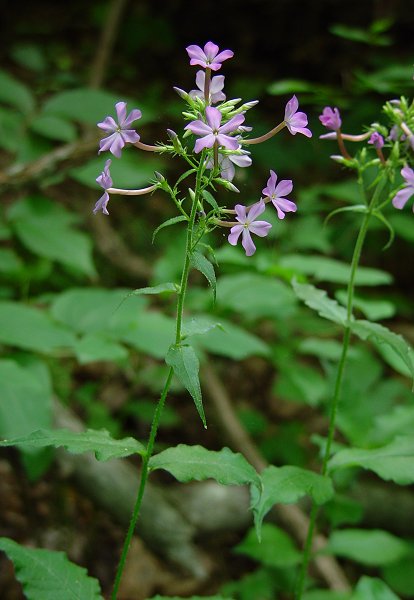Phlox amplifolia Britton
Broadleaf Phlox

Native
CC = 9
CW = 5
MOC = 8
© DETenaglia
Phlox amplifolia BrittonBroadleaf Phlox | |
 |
Native CC = 9 CW = 5 MOC = 8 |
© DETenaglia |
|
Family - Polemoniaceae Stems - To -1m tall, erect, herbaceous, perennial, from a small woody caudex and slightly thickened roots, terete, glabrescent basally, densely glandular pubescent apically, simple, one or two from base, with 6-15 nodes per stem. Some of the hairs along the length of the stem stellate also.
Leaves - Opposite, decussate, sessile or short petiolate (the petioles obscured by decurrent leaf tissue), to +/-10cm long, +/-5cm broad, ovate to lanceolate, entire, acute to acuminate, pubescent and slightly scabrous adaxially, villosuous abaxially, dark green adaxially, light green abaxially. Veins of the leaf impressed adaxially, expressed abaxially, anastomosing.
Inflorescence - Terminal and lateral cymes from the upper leaf axils, to +/-10cm long (tall). Each division of cyme subtended by a pair of linear bracts. Bracts reduced upward. Branches of inflorescence and bracts densely glandular pubescent. Pedicels to 5mm long. Flowers - Corolla lilac to pinkish, 5-lobed, glabrous. Tube to +3cm long. Lobes spreading, obovate, blunt at the apex, to 1cm long and broad. Stamens 5, included. Anthers yellow-orange, 3mm long, 1mm broad. Ovary superior, green, ovoid, 1.5-2mm long in flower, 1mm in diameter. Calyx densely glandular pubescent externally, glabrous internally. Calyx tube to 4-5mm long in flower, 5-lobed. Lobes attenuate, 3-4mm long, connected at the base by scarious tissue and helping to form the calyx tube.
Flowering - May - August. Habitat - Rich, rocky, or alluvial woods, slopes along streams. Origin - Native to U.S. Other info. - This striking species is fairly uncommon in Missouri. It is found in just a handful of counties in the Ozarks. Photographs taken at Alley Spring, MO., 6-4-03. |